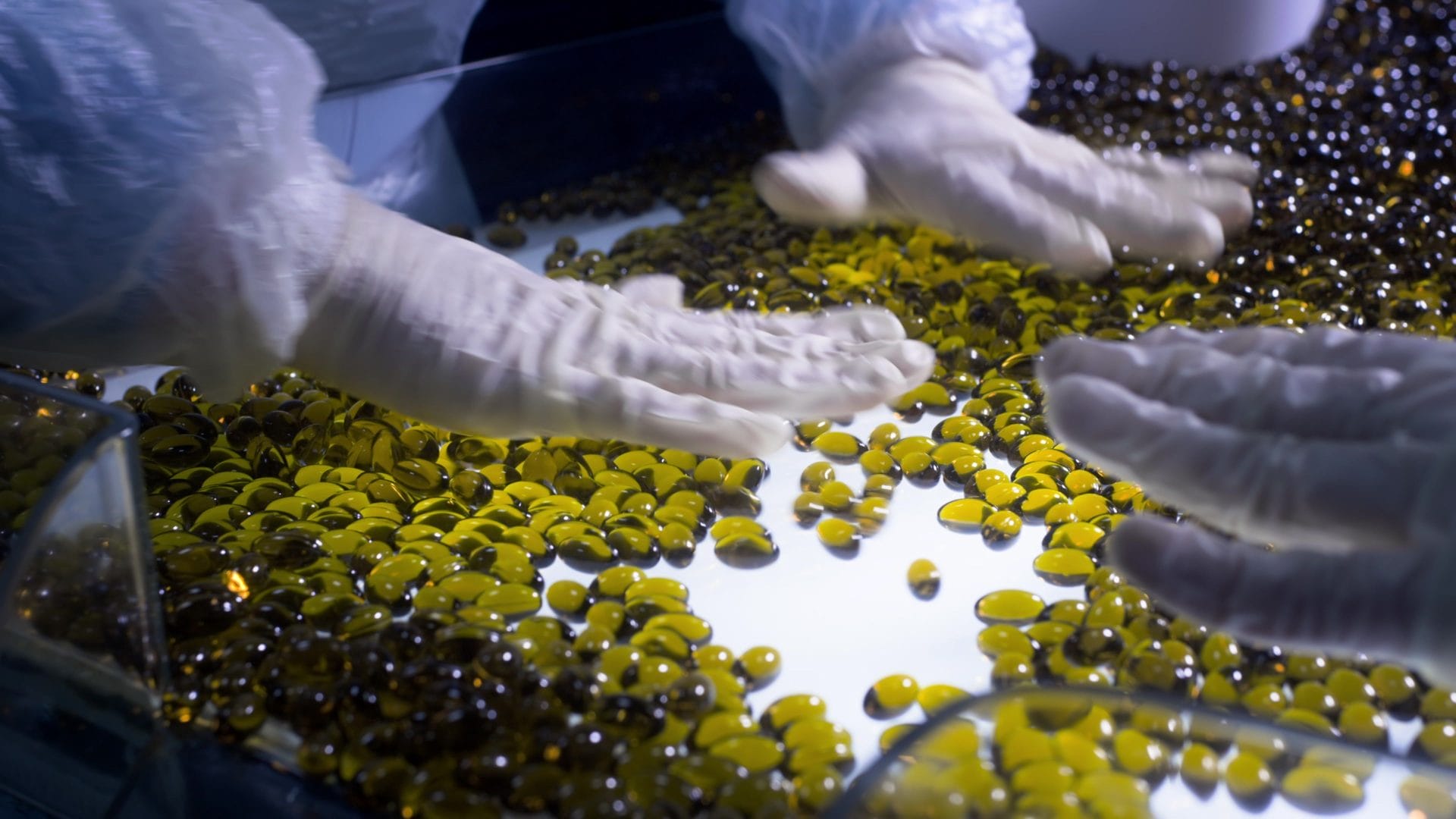The Complete Guide for EU Companies Who Wish to Move Their Production to the US
The United States is the world’s largest nutraceuticals market, with a market size of $163 billion in 2024. An aging population and more awareness about the benefits of nutraceuticals make this specific market even more promising.
This massive market opportunity, alongside favorable regulatory frameworks and advanced manufacturing infrastructure, makes the US a rewarding destination for European companies looking to expand their contract manufacturing operations.
Unlike the European Union’s centralized regulatory approach, the United States operates under a federal system, where the Food and Drug Administration (FDA) sets national standards. At the same time, individual states may impose additional requirements, creating both opportunities and challenges that European manufacturers must take into account.
The US market’s size and diversity also mean that successful contract manufacturers can serve multiple market segments simultaneously, from premium wellness products to mass-market dietary supplements. Again, the opportunities are almost endless.
The nutraceutical market differs significantly from Europe. It includes established players, such as large pharmaceutical companies with nutraceutical divisions, as well as specialized contract manufacturers that focus exclusively on dietary supplements.
For an EU company, the US market represents a promising opportunity. To truly thrive in it, though, EU companies must partner with an experienced manufacturer in the American nutraceutical marketplace, like NutraCoast.

Regulatory Framework and FDA Compliance
For an EU nutraceutical company to succeed in the US, it must comply with FDA regulations, which differ from European requirements. The FDA’s Current Good Manufacturing Practice (cGMP) regulations for dietary supplements, codified in 21 CFR Part 111, include specific requirements for manufacturing, packaging, labeling, and holding operations.
European companies often find the FDA’s approach to be more prescriptive in some areas, while more flexible in others, compared to EU regulations. The FDA requires detailed documentation of manufacturing processes, including master manufacturing records, batch production records, and comprehensive testing protocols. However, unlike the EU’s novel foods regulations, the US system is more open to the rapid introduction of new ingredients under the Generally Recognized as Safe (GRAS) framework.
Product registration requirements also differ. While the EU requires extensive pre-market authorization for many nutraceutical products, the US operates under a notification system where manufacturers must notify the FDA of new dietary ingredients, but don’t require pre-market approval for most products. This practice helps companies enter markets more quickly, but also places greater responsibility on manufacturers to verify safety and compliance.
Quality systems must meet FDA expectations, which emphasize risk-based approaches to manufacturing and quality control. European companies with ISO 22000 or similar certifications will find many familiar concepts, but must adapt their systems to meet FDA-specific requirements for manufacturing dietary supplements.
Business Structure and Legal Considerations
To enter the US market, you must first establish the proper corporate structure for your entity. That includes careful consideration of corporate structure, tax implications, and regulatory obligations. Most European companies opt for either a limited liability company (LLC) or a corporation structure.
The choice of incorporation state impacts tax obligations, regulatory requirements, and operational flexibility. Delaware remains popular for its business-friendly courts and well-established corporate law. States like Nevada offer tax advantages. The state where you conduct actual manufacturing operations will also impose its requirements, creating a multi-jurisdictional compliance framework.
Intellectual property protection assumes new dimensions in the US market, where patent and trademark requirements differ from European norms. Companies must conduct thorough freedom-to-operate analyses and consider defensive patent strategies to protect their formulations and manufacturing processes. It’s also necessary to protect trade secrets related to proprietary manufacturing techniques and formulations.
Regarding employment law, key considerations include the concept of at-will employment, which differs significantly from European labor protections. To be a successful contract manufacturer, you also must be fully aware of immigration requirements, especially if you choose to bring European personnel to establish US operations. This includes L-1 intracompany transfer visas and specialized worker classifications.

Market Entry Strategies and Positioning
European manufacturers often possess organic certification, sustainable manufacturing practices, and specialized extraction technologies that cater to the health-conscious American consumer.
Even so, European companies entering the US nutraceuticals contract manufacturing market must position themselves in a way that leverages their strengths and competitive advantages while adjusting them to meet the American market and customer preferences.
For example, many American consumers prefer “Made in USA” nutraceuticals, giving EU companies that manufacture in the US an advantage. However, some market segments value European heritage and quality standards. Manufacturing companies must thus position themselves in a way that emphasizes their European quality and innovation, while also committing to meeting American manufacturing standards and creating jobs in the United States.
Partnership strategies can boost market entry and reduce risk. Joint ventures with established US companies provide immediate market access and regulatory expertise. Likewise, the acquisition of existing facilities offers rapid scaling opportunities. As for organic growth through greenfield development, it gives manufacturers complete control over quality systems and corporate culture.
Customer acquisition in the US market demands thorough research of the market segment, potential clients, and competitors. Also study large multinational brands, as well as emerging direct-to-consumer companies. The growth of e-commerce and subscription-based business models has created new categories of customers with specific manufacturing requirements, including smaller batch sizes and rapid product development cycles.
Facility Planning and Infrastructure Requirements
EU companies looking to contract manufacturing in the US must establish their manufacturing facilities in the United States. Take into account zoning, permitting, and infrastructure considerations that vary by state and local jurisdiction. Select the ideal site and strike a balance among factors such as proximity to raw material suppliers, transportation networks, skilled labor availability, and state-specific incentives for manufacturing operations.
FDA-compliant facility design requires specialized expertise in cleanroom environments, material flow optimization, and segregation requirements for different product categories. European companies must adapt their facility design standards to accommodate American utility standards, building codes, and accessibility requirements under the Americans with Disabilities Act.
Regarding sourcing equipment, some European-standard equipment may not meet American electrical and safety codes. Successful manufacturers often develop relationships with equipment suppliers who understand both European quality standards and American compliance requirements. Equipment may require custom modifications or certifications.
Manufacturers in the United States must also meet specific environmental standards. Federal Environmental Protection Agency (EPA) requirements overlap with state-specific ecological regulations. Waste management, air quality control, and water treatment systems must meet standards that may exceed European requirements in some areas while being more flexible in others.

Technology Transfer and Process Validation
European manufacturing processes must adapt to and comply with US facilities and their requirements. This includes process validation that satisfies FDA requirements and maintains product quality and consistency. Validation is accompanied by detailed documentation of European processes, identification of vital control points, and process criteria applicable to American conditions.
Many European companies scale up from their European Union facilities to larger-scale production in the United States. There are differences in raw material sources, environmental conditions, and equipment specifications that impact the production process and final product. Successful technology transfer often requires months of validation work and multiple trial batches to reach consistent results.
Regarding analytical method transfer, US laboratories may use different analytical standards and reference materials compared to those used in European facilities. Companies must validate their method and show the equivalence between European and American analytical approaches, while still meeting FDA requirements for analytical method validation.
For example, the FDA expects a full process development report, validation protocols, and control procedures. You will need such documentation for future FDA inspections, and it will serve as the foundation for all ongoing manufacturing operations.
Supply Chain Management and Vendor Qualification
A nutraceutical company in the United States must establish the right supply chains for raw materials and components. You must be familiar with the American supplier world and develop qualification procedures that meet FDA requirements. European companies often discover that their preferred suppliers may not have operations in the US or may not meet American quality standards.
Many companies settling in the US must thus partner with vendors who meet FDA expectations and requirements, including on-site audits, review of certificate of analysis procedures, and supplier performance monitoring systems. The FDA’s increased focus on supply chain integrity means that contract manufacturers bear significant responsibility for their suppliers’ compliance and quality systems.
Companies must source raw materials, balancing cost considerations with quality requirements and supply security. The US market offers access to different raw material sources, including domestic suppliers and alternative international sources that may provide advantages over European suppliers in terms of cost or availability.
Inventory management is more complex in the US market due to longer supply chains and varying seasonal demand patterns. Successful contract manufacturers develop forecasting systems and maintain strategic inventory levels to ensure consistent production and stock without incurring excessive costs. Again, this is a balancing act.
Quality Systems and Regulatory Compliance
Quality systems must satisfy both FDA requirements and European standards. The FDA’s quality system regulation focuses on process validation, change control, and continuous improvement. These concepts align with European quality management approaches but require distinct strategies.
For example, the documentation that supports control systems must meet FDA requirements, especially regarding record retention, change authorization, and batch documentation. Electronic systems improve monitoring and compliance. However, they must be used in accordance with FDA requirements for electronic records and signatures.
As for testing and release procedures, they must meet FDA expectations for finished product testing, stability studies, and batch release. European companies often find that their existing testing protocols exceed FDA requirements in some areas but require improvements in others, particularly regarding microbiological testing and heavy metals analysis.
Quality systems also include how businesses handle complaints and report adverse events. European companies must establish systems that receive, investigate, and report adverse events to the FDA within specified timeframes. Such companies must typically maintain their existing EU pharmacovigilance obligations to comply with EU rules as well.
Staffing and Human Resources
Any business in the US must have a qualified workforce for nutraceuticals manufacturing. Your company must follow and comply with the American labor market and develop recruitment strategies that attract experienced professionals. The nutraceuticals industry competes with pharmaceutical and food manufacturing for skilled workers. This competition creates pressure on compensation and benefits.
Amongst the necessary personnel, the company must hire qualified people responsible for manufacturing and quality operations, as well as specialists in regulatory affairs, quality assurance, and process development. European companies often find that American professionals bring valuable local market knowledge and regulatory expertise that builds on their existing European technical abilities.
Companies often run training programs to upgrade technical skills and bridge cultural differences between European and American work environments. Successful manufacturers invest heavily in cross-cultural training and develop standardized procedures that translate European quality standards into American operational practices.
The American labor market is highly competitive, and businesses strive to retain their personnel. In the United States, employee mobility exceeds European norms. To remain competitive and successful, companies must develop attractive benefit packages, career development programs, and equity participation opportunities.
Financial Planning and Investment Considerations
Capital requirements for establishing US nutraceutical manufacturing operations typically exceed initial European estimates due to regulatory compliance costs, facility modifications, and extended validation timelines. Successful companies develop detailed financial models that account for both direct costs and indirect expenses linked to regulatory compliance and market development.
Companies must set up their funding strategies to meet the initial investment required for facility establishment and ongoing working capital needs during the market development phase. European companies often underestimate the time it takes to become profitable in the US nutraceutical market. Secure the proper capitalization and funding for long-term success.
When businesses operate in multiple jurisdictions, tax planning can get complicated, especially regarding transfer pricing for intercompany transactions and potential double taxation issues. Companies must seek professional tax advice to understand their tax structure and comply with both U.S. and European tax obligations.
Lastly, businesses must have insurance. Insurance requirements in the US market often exceed those in the European market, particularly for product liability coverage. The American litigation environment can pose a significant risk to manufacturers. For maximum safety and protection, you need comprehensive insurance coverage.

Building Strategic Partnerships
Strategic partnerships
Strategic partnerships with an experienced manufacturer like NutraCoast can accelerate market entry and provide access to established distribution networks and customer relationships. European companies often find that it is safer, practical, and cost-effective to partner with US-based sales organizations, regulatory consultants, and logistics providers.
American business practices
To be successful, new entrants must understand American business practices and expectations to manage customer relationships effectively. While American and EU businesses share many similarities, they also differ, particularly in the pace of business decision-making and contract negotiation processes.
Industry associations
EU companies can benefit from participating in industry associations to create network opportunities and access industry intelligence. Organizations such as the Natural Products Association and the Council for Responsible Nutrition offer great opportunities to build relationships and develop valuable contacts in the field.
Service relationships
EU entrants often find professional service relationships help them comply with regulations and grow their business. Relationships with experienced attorneys, accountants, and regulatory consultants provide you with access to specialized expertise and the necessary knowledge of the American business environment.
Long-term Growth and Expansion Strategies
The US nutraceutical market is promising and continues to expand. It’s no surprise, then, that many EU companies have every interest in producing their nutraceutical supplements in the United States and selling directly to their American market.
Plan with an eye to the long term, particularly regarding how you anticipate the market will evolve. You must also consider how regulations evolve and adapt accordingly.
The size and diversity of the American market create opportunities for geographic expansion. Nutraceutical companies can design supplements tailored to different customer segments and offer complementary services to support their products. Plan to scale up your production capacity and organizational abilities.
In many cases, European companies that successfully establish operations in the US often find opportunities to serve as platforms for broader North American expansion, including entry into the Canadian market and opportunities in the Mexican manufacturing sector.
In the US market, European nutraceutical companies often use technical expertise in conjunction with innovative strategies to meet American market preferences and regulatory requirements. Develop new product categories and invest in more efficient manufacturing processes to drive growth.
Finally, many companies plan for their exit strategy. In this case, take into account how you can sell your business or expand further. To be successful today and in the long run, nutraceutical companies that relocate from the EU to the US must build valuable, transferable assets and establish strong market positions. Create long-term value and build your flexibility for future growth decisions!

